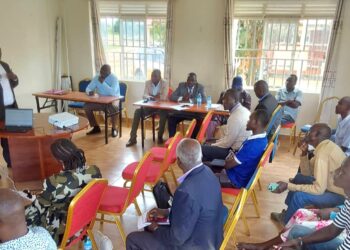The World Health Organization (WHO) updated its guidance on Friday to recommend that governments ask everyone to wear fabric face masks in public areas where there is a risk of transmission of COVID-19 to help reduce the spread of the pandemic disease.
In its new guidance, prompted by evidence from studies conducted in recent weeks, the WHO stressed that face masks were only one of a range of tools that can reduce the risk of viral transmission, and should not give a false sense of protection.
The use of masks has been a hot topic ever since the pandemic first emerged in China in December.
“In light of evolving evidence, WHO advises that governments should encourage the general public to wear masks where there is widespread transmission and physical distancing is difficult,” said WHO chief Tedros Adhanom Ghebreyesus.
In areas with community-level virus transmission, “we advise that people aged 60 years or over, or those with underlying conditions, should wear a medical mask in situations where physical distancing is not possible”, he added.
The WHO’s technical lead expert on COVID-19, Maria Van Kerkhove, said in a Reuters interview: “We are advising governments to encourage that the general public wear a mask. And we specify a fabric mask – that is, a non-medical mask.
“We have new research findings,” she added. “We have evidence now that if this is done properly it can provide a barrier … for potentially infectious droplets.”
But the UN health agency stressed that facemasks alone “will not protect you from COVID-19” — and people suffering with the virus should not be out in public if they can avoid it.
The WHO maintained its recommendation that people who are sick with COVID-19 symptoms should stay at home and if it is absolutely necessary for them or their contacts to leave home, they should wear a medical mask.
– Three-layer facemask –
The WHO also issued new guidance on the composition of non-medical fabric masks for the general public, advising that they should consist of at least three layers of different material.
The inner layer should be made of a water-absorbent material such as cotton, the middle layer — which acts as a filter — from a material like non-woven polypropylene, while the outer layer should be a water-resistant material such as polyester.
The WHO’s emergencies director Michael Ryan stressed that putting on a fabric mask is primarily about preventing the wearer from possibly infecting others, rather than self-protection.
“It’s an altruistic act,” he said.
And Tedros stressed that masks were only one part of an effective strategy to suppress the virus — and should not lure people into a false sense of security.
He said they were not a replacement for physical distancing and hand hygiene.
“Find, isolate, test and care for every case, and to trace and quarantine every contact. That is what we know works. That is every country’s best defence against COVID-19.”
The novel coronavirus has infected at least 6.7 million people and killed more than 390,000 since the outbreak first emerged in China last December, according to a tally from official sources compiled by AFP.
Do you have a story in your community or an opinion to share with us: Email us at editorial@watchdoguganda.com












